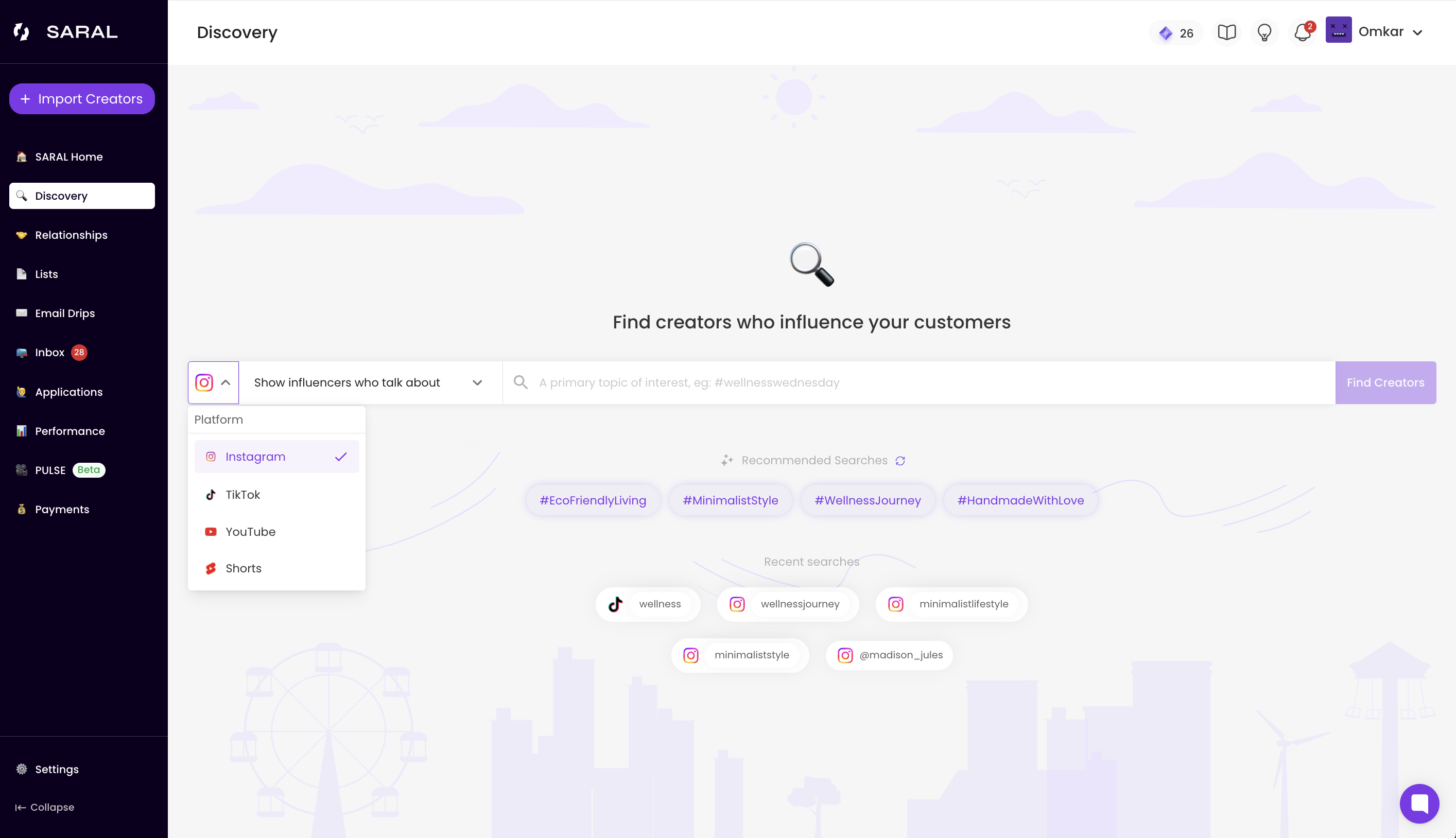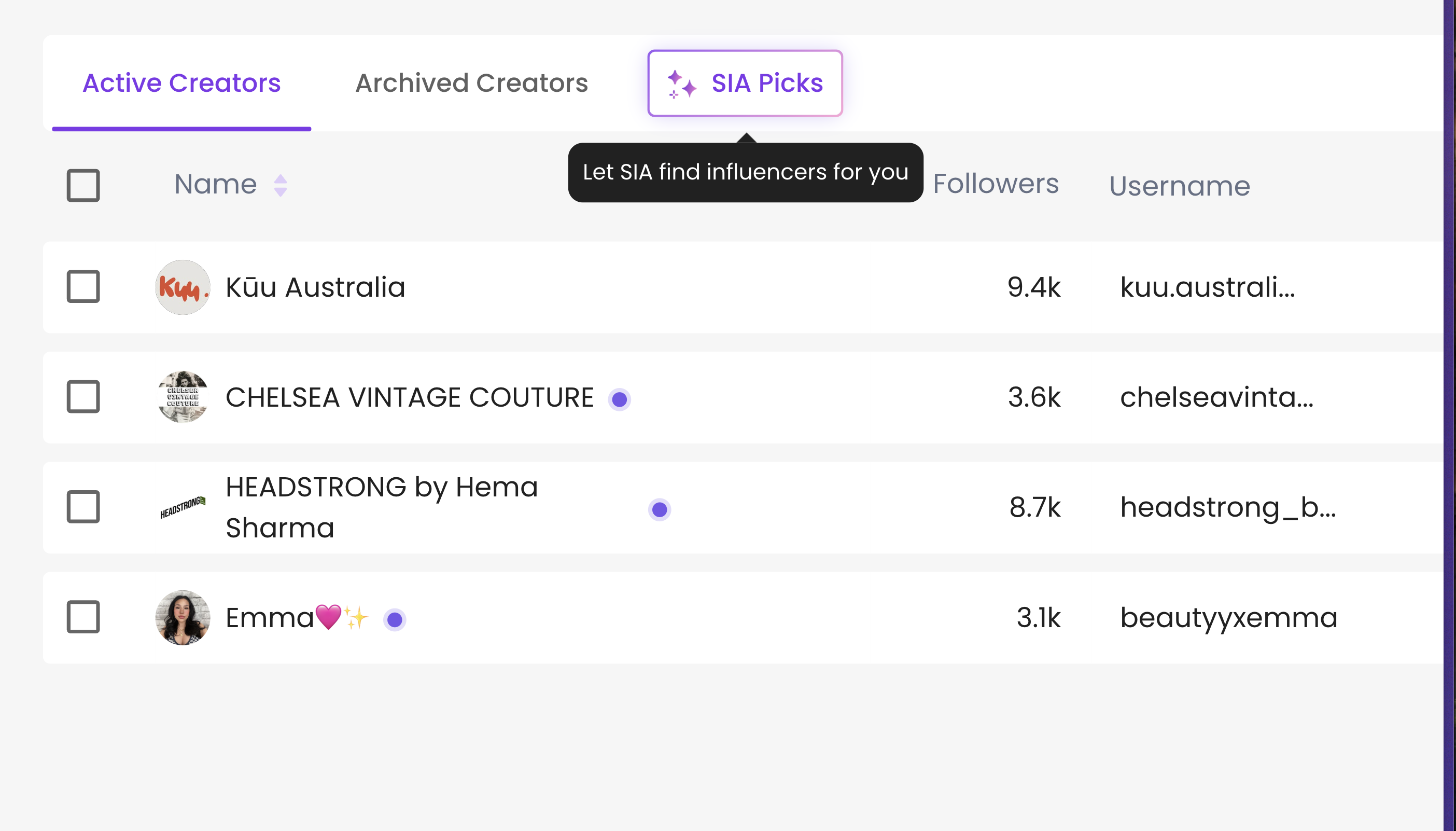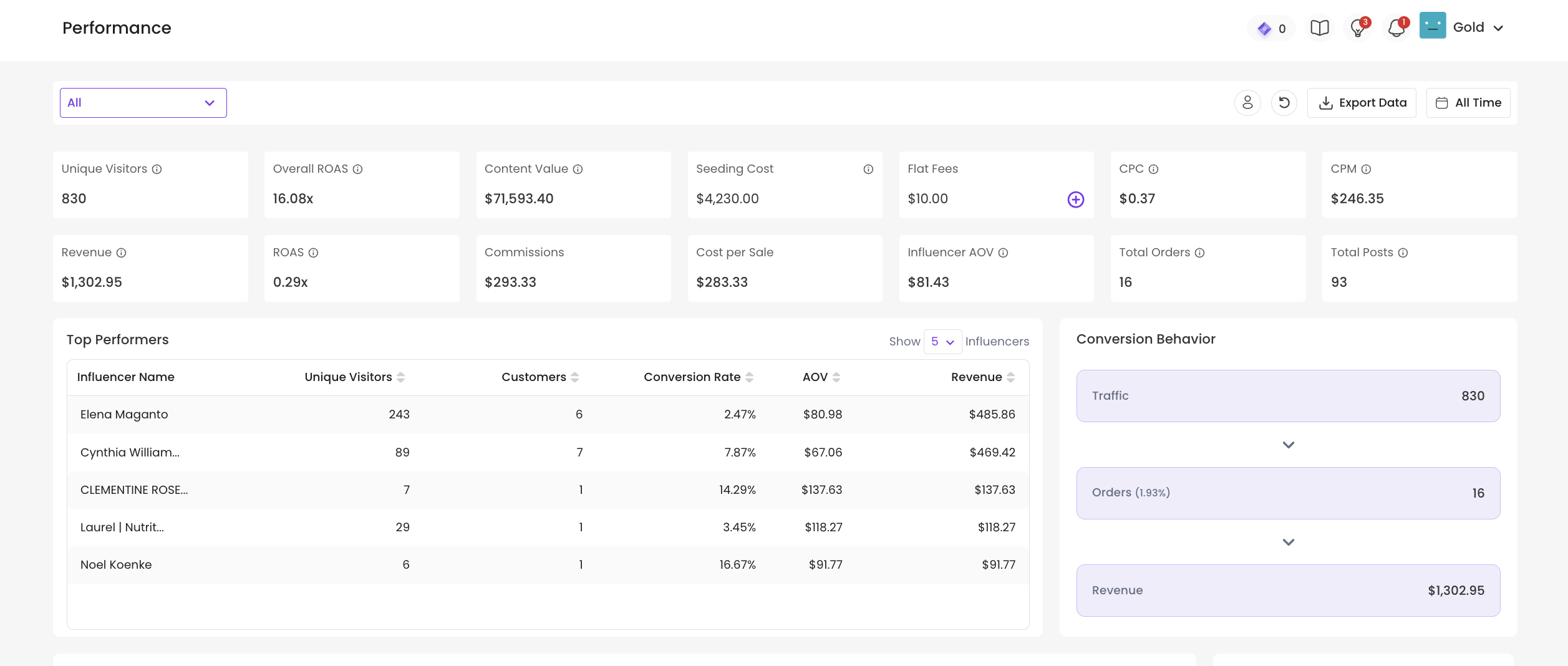Ready to drive incremental growth with influencers?
If ditching the randomness of influencer campaigns and building a predictable, ROI-first influencer program sounds like a plan. Consider talking to our team!

Spacegoods went from 200 monthly product gifts to 1000+ creator partnerships that generate revenue and content for Meta ads. See how they built a self-funding influencer program with a team of 2.

Contents
Most DTC brands spending six figures on Meta hit the same wall: creative fatigue. You need fresh, authentic content constantly, but branded shoots get stale. The obvious answer is influencer marketing - except most brands get stuck in the mass gifting trap. Send hundreds of products monthly, hope for posts, repeat. It's a hamster wheel that never compounds.
Spacegoods, a UK wellness brand making mushroom-powered drinks, was caught in this exact cycle in early 2024. An external agency was shipping 200-300 free products monthly. Posts trickled in. Awareness spiked. Then nothing. No relationships. No measurement. No way to prove ROI.
Nine months later →
Watch the full interview with Dan,Stevenson, their Influencer Marketing Lead, on how he built a self-sustaining system.
When Spacegoods brought on Dan in March 2024, he came from a role where he managed 300 affiliates and 40-50 paid partnerships with a team of four people. The work was hands-on, manual, and required constant firefighting.
At Spacegoods, the situation was messier.
This is textbook foundational influencer marketing - seeding products to build awareness.
In our Predictable Influence Pyramid, seeding sits at the base. It's here most brands start. You send free product, creators post, you get eyeballs. It works great for discovery.
But Spacegoods had already moved past the discovery phase. They didn't need more awareness - they needed conversion and content at scale.
The challenge: if they wanted to 10x their influencer program, they'd need to 10x the team. That math didn't work.
The decision was clear - stop seeding entirely and move up the pyramid to affiliate partnerships.
This is the second tier: systematic relationships with commission structures that create repeatability.
Why did Spacegood choose affiliates over continued seeding?
Three reasons:
But there's a psychological problem with the word "affiliate." It sounds transactional, like you're just trying to get free advertising. So they reframed it entirely.
Instead of "Join our affiliate program and earn commission," the pitch became "Join our community of wellness creators."
No mandatory posts. No contracts. No pressure. Just: here's your code, post when it makes sense, earn when you do.
This positioning shift matters. Creators don't want to feel like affiliates. They want to belong to something.
However, positioning alone doesn't solve the scale problem.
To manage 1000+ partnerships with two people, they needed automation everywhere.
At Dan’s previous job, managing 300 affiliates required a team of four. At Spacegoods, the budget was smaller but the ambition was bigger. They needed to manage 1000+ partnerships with minimal headcount.
The solution was to automate everything that didn't require human judgment.
Early on, they manually searched for influencers by keyword on SARAL - "mum creators" or "coffee”. This worked for the first 50-100 partnerships.

Now, they use SARAL's lookalike feature (powered by SIA!) . They take their best-performing paid influencers, drop them into the tool, and it finds 100+ similar creators in minutes.

This completely changed their discovery process. Instead of spending time manually hunting for influencers, they batch discover hundreds of qualified prospects in one sitting.
Once they have a list of 100+ creators, SARAL's email automation handles the outreach. They queue personalized messages and the system manages follow-ups automatically.

This is the efficiency unlock. At his previous job, Dan spent a minimum of 12 hours per week on partnerships with a team of four. Now at Spacegoods, despite managing more partnerships, the time investment per creator is significantly lower.
"Every little bit of efficiency we can bring in is better."
The final piece is eliminating all administrative work.
Every affiliate automatically gets a code through Shopify integration. Every redemption automatically tracks to that creator. Payments flow through without manual reconciliation.

No spreadsheets. No manual tracking. No payment reconciliation. The system runs itself.
Most influencer programs track reach, impressions, engagement rates - metrics that look good in reports but don't answer the question founders care about: is this lowering our CAC?
Spacegoods ignores vanity metrics entirely. They track three things:
With SARAL's performance dashboard, you can highlight metrics that show the a more holistic picture →

Measuring impact via direct attribution is not enough. There's another layer happening that's harder to quantify but equally valuable.
Most brands treat affiliates as a standalone revenue channel. Spacegoods sees it differently.
Here's how the model works:
Affiliates generate revenue through their codes - let's say $50K per month.
That's $50K Spacegoods can reinvest into paid influencer partnerships without touching their core marketing budget.
The affiliate program funds its own expansion and the expansion of their paid partnerships.
This creates a flywheel: affiliates fund paid partnerships → paid partnerships become case studies for affiliate recruiting → more affiliates join → more revenue to fund paid partnerships.
But the revenue is almost secondary to the content value.
Spacegoods runs significant Meta budgets. And increasingly, their best-performing ads come from creator content.
According to their paid media agency, Spacegoods has the highest partnership content contribution.
Why does creator content outperform? It doesn't look like an ad. It's someone real, in their kitchen, making their morning routine. It's authentic in a way branded content can't replicate.
To make this work at scale, you need a constant pipeline of fresh creator content. The affiliate program isn't just generating revenue - it's a content engine feeding their Meta ad account with high-performing creative.
This is the halo effect in action.
Affiliates drive direct revenue through codes, create content for Meta ads, and build social proof. The combined impact is larger than any single metric can capture.
The system gets more efficient as it grows. More affiliates mean more content, which improves Meta performance, which drives more awareness, which attracts more creators who want to join the community.
It's predictable. It's scalable. And it runs on a team of two.
Want to get results like Spacegoods?


See how SARAL can work for your brand.


Want to get results like Spacegoods?

If ditching the randomness of influencer campaigns and building a predictable, ROI-first influencer program sounds like a plan. Consider talking to our team!